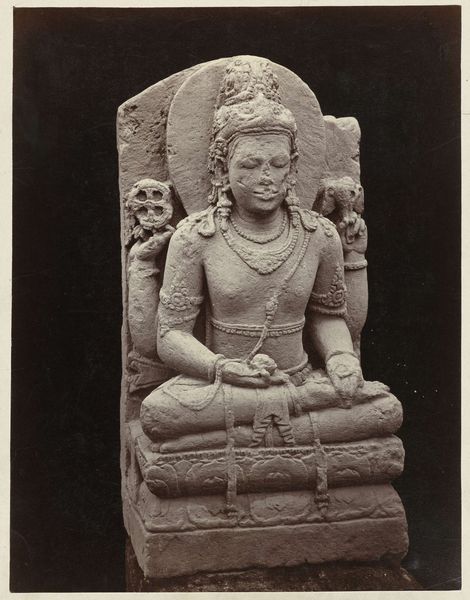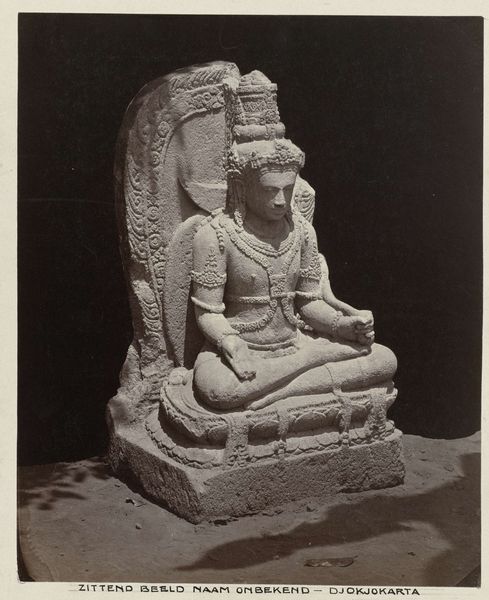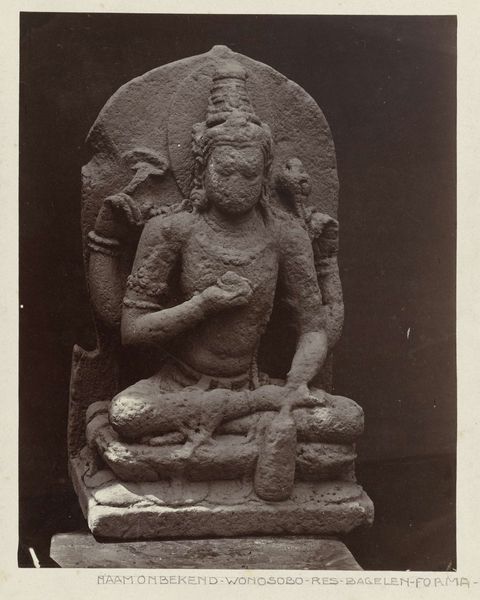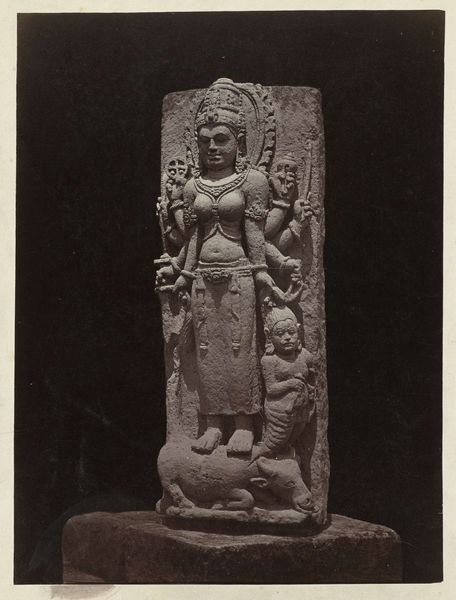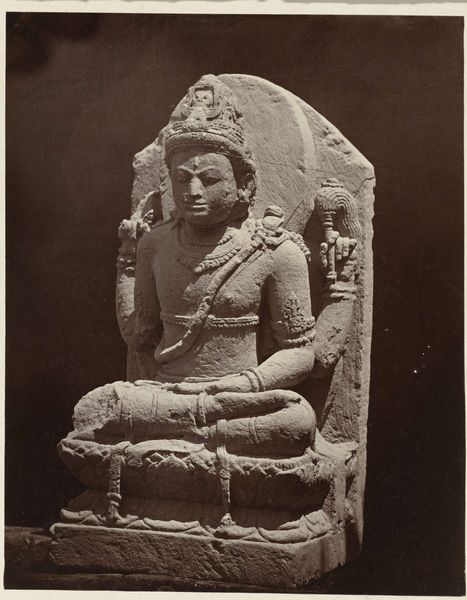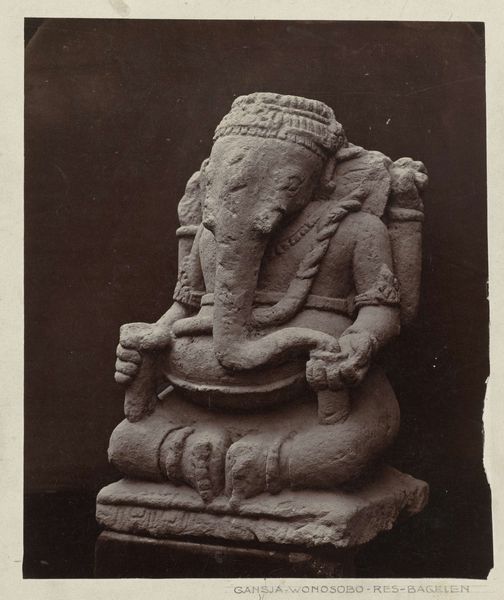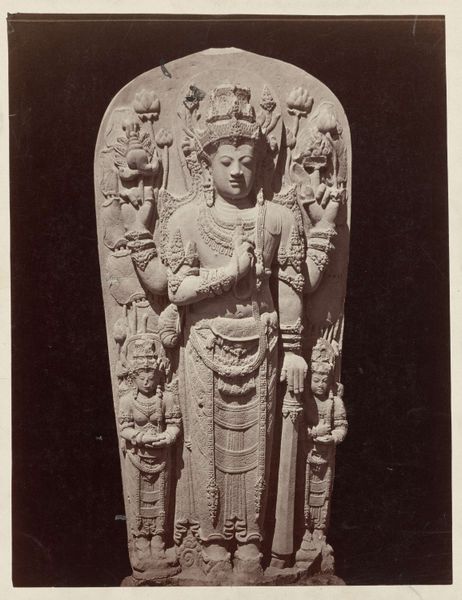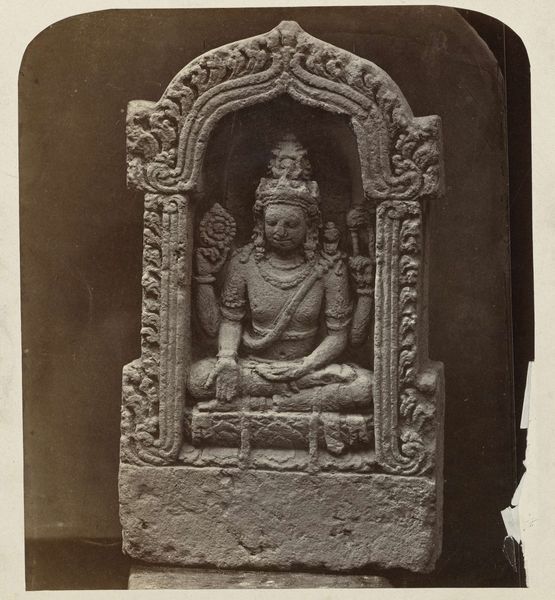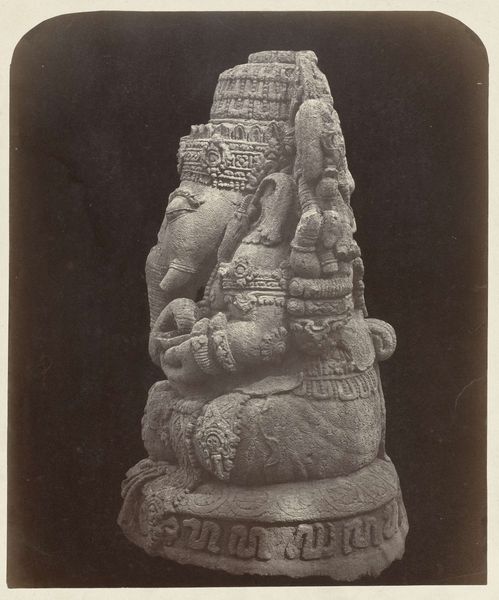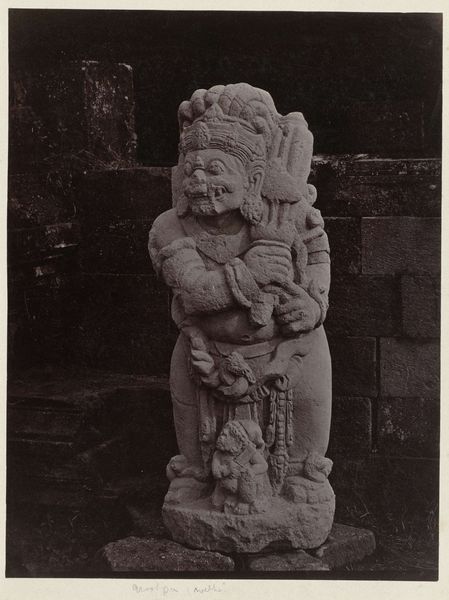
Nandishvara, Dieng plateau, Wonosobbo-district, Central Java Province, 9th century. Possibly 1864 - 1867
0:00
0:00
sculpture
#
portrait
#
sculpture
#
asian-art
#
figuration
#
ancient-mediterranean
#
sculpture
#
statue
Dimensions: height 260 mm, width 210 mm
Copyright: Rijks Museum: Open Domain
Editor: Here we have an image, likely a photograph, of a 9th-century sculpture of Nandishvara from the Dieng Plateau in Central Java. The stone has a worn texture, yet the figure is still very discernible. What are your thoughts on this work? Curator: It’s interesting to consider this Nandishvara through a materialist lens. This sculpture, like all art, is the product of specific labor. Who were the sculptors? Were they local artisans or part of a larger, perhaps even state-sponsored, workshop? Understanding the socio-economic context of its creation is crucial. Editor: That makes me wonder about the material itself, too. Was the stone locally sourced? How would that have affected production? Curator: Exactly! Sourcing, transportation, and the properties of the stone itself all played a role. And we must consider its function: Was it part of a larger temple complex? Who was meant to view it, and how would that have shaped its making? Editor: It is amazing to think how the availability and nature of material affect how and why artists created things, but so easy to ignore. Curator: Consider too, how labor and religious intent are inextricably linked in its creation. Were the artisans motivated only by money, or was the task of carving itself also understood as devotion, potentially affecting the end result? Editor: Thinking about art as labor and material gives us so much insight! I’d always focused on its artistic aspects or the story, and completely failed to see that making art is actually production and is subject to how and by whom art can be made. Curator: Precisely. The physical object, Nandishvara in this instance, is more than just symbolic, it’s also a record of specific historical and social conditions. Editor: Thanks to you, I see this work, and other art, completely differently.
Comments
No comments
Be the first to comment and join the conversation on the ultimate creative platform.

